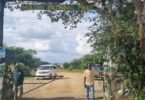Kenya and Tanzania are the only countries in the world that experience the wildebeest migration, which is considered the eighth wonder of the world.
Most of the movement takes place in Tanzania which covers Serengeti National Park, Ngorongoro Conservation Area, Loliondo Game Controlled Area and Grumeti Reserve. In Kenya, the migration stretches to the Maasai Mara Game Reserve, bordering Serengeti National Park in the north.
However, during this migration process, there are various months of the year where you are set to enjoy a close range of these herds
June to October

Great wildebeest migration from Serengeti into the Masai Mara – Cedarberg Travel
The wildebeests move from the Northern Serengeti (Tanzania) to the Southern Masai Mara (Kenya). This is the best time to be in Kenya as you will see the herds cross the heavily crocodile-infested Mara River.
The animals graze on the southern banks of the river before one brave wildebeest takes the dive into the river current. The rest follow in a dramatic watery stampede. Some do not make it. Majority of the tourists have considered this as the most desirable phase of the migration.

A wildebeest stuck in a crocodile’s jaw – Trevaron Tours
To maximise your chances of seeing this beautiful action, camp around the river for a week. The herd will then migrate South, to Serengeti, at around November to December. This is another time of the year to witness the crossing of the Mara River.
December to April

Aerial view of the wildebeest in Serengeti National Park [Photo/Trailblazers Travel]
Serengeti becomes the ‘expo’ for one of the most impressive wildlife shows on earth. Hundreds of thousands of plains game begin moving towards the Seronera, then the Grumeti River. The massive moving herd is closely hunted by predators; lion, cheetah, leopard and hyena which take advantage of the new mothers and calves.

A determined lioness hunting a wildebeest – Safari365
Fact Box;
1. The migration sees over 1.5 million wildebeest and 200,00 zebras travelling across the two countries, approximately covering 800 km in each cycle
2. During the migration around 250,000 wildebeest and 30,000 zebra die every year as a result of predation by carnivores, crocodiles, thirst, hunger and exhaustion.

A wildebeest narrowly escapes the jaws of a crocodile as it crosses the Grumeti River during the Great Wildebeest Migration – Art of Safari
3. During the migration, over 3,000 lions follow the herd closely due to the availability of food and easy prey.








